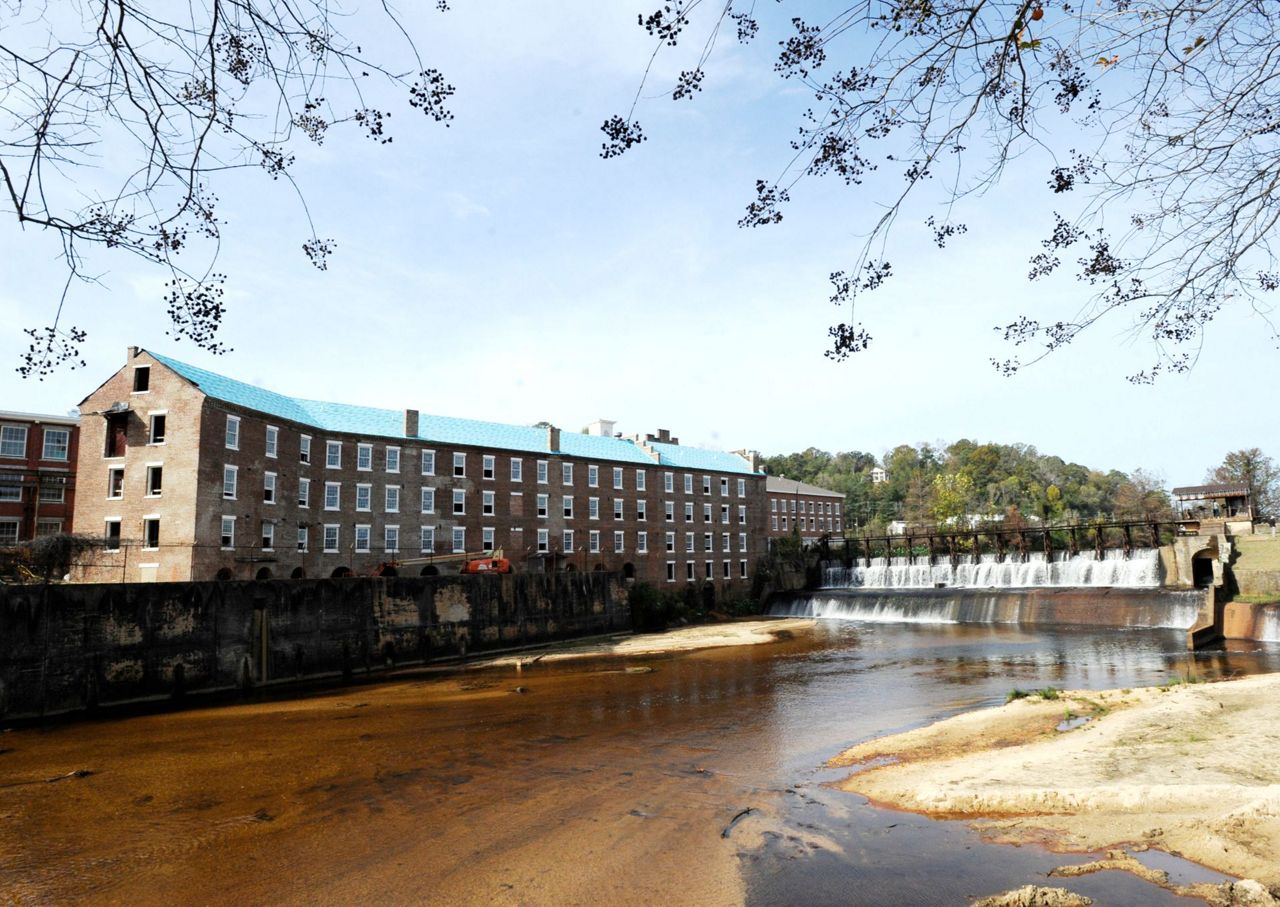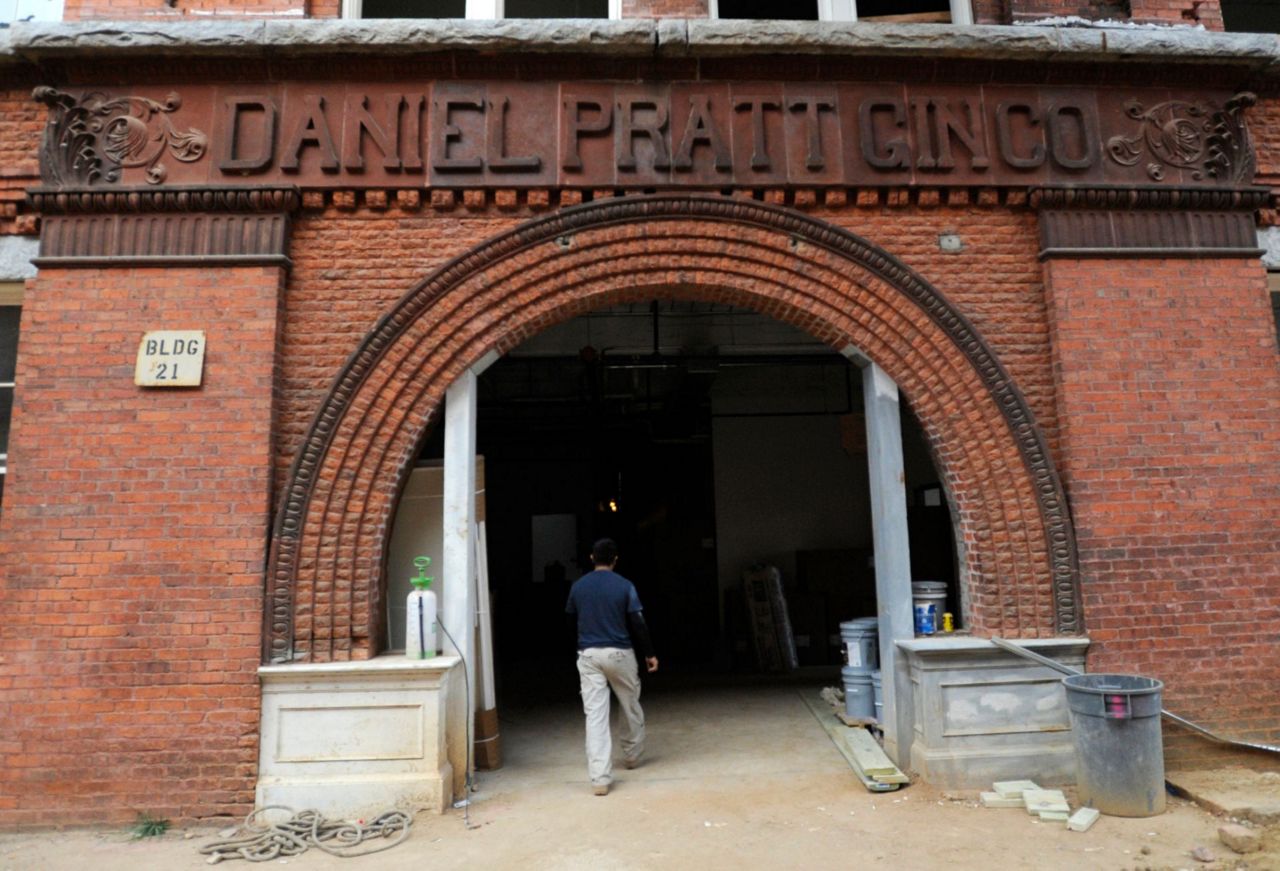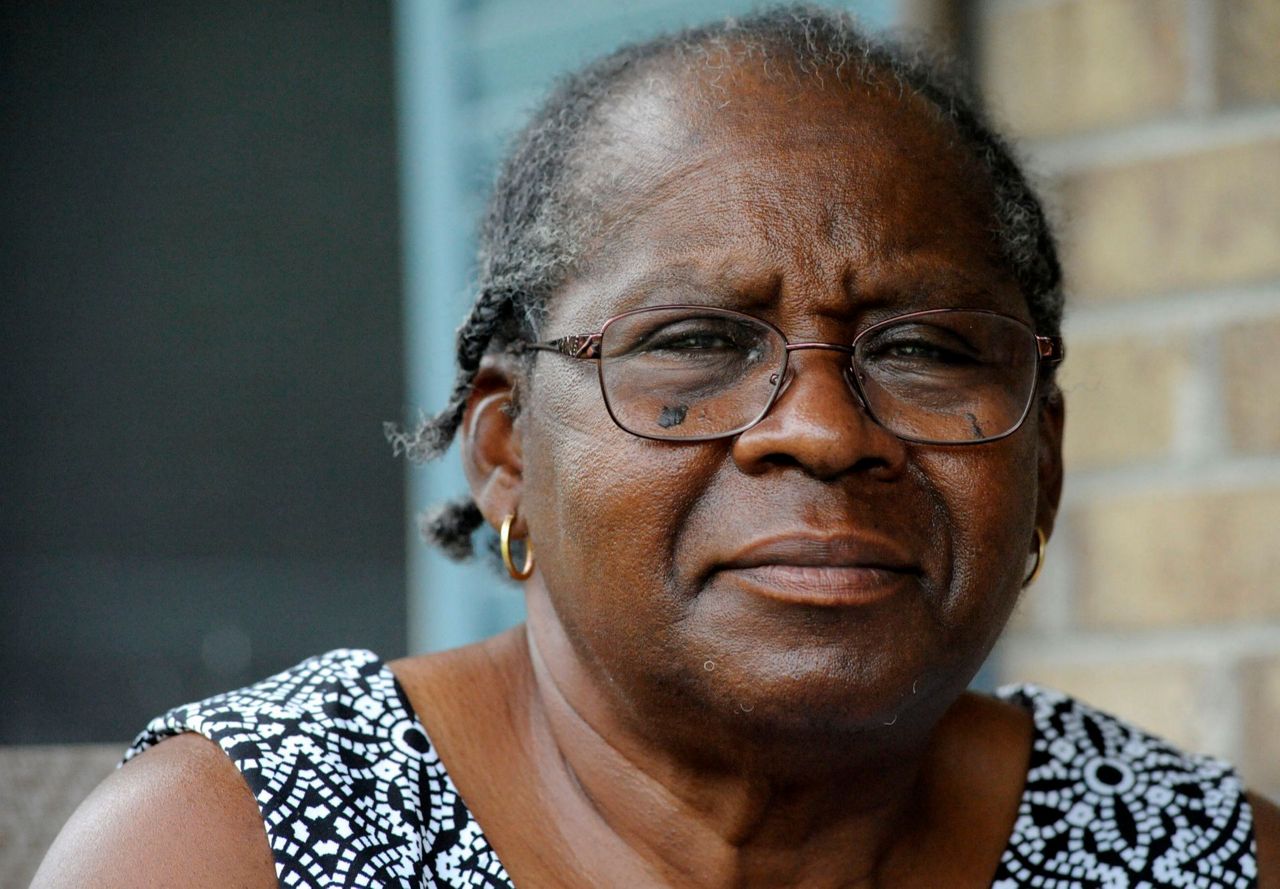PRATTVILLE, Ala. (AP) — There’s no painless way to explain the history of a massive brick structure being renovated into apartments in this central Alabama city — a factory that played a key role in the expansion of slavery before the Civil War.
Dating back to the 1830s, the labor of enslaved Black people helped make it the world’s largest manufacturer of cotton gins, an innovation that boosted demand for many more enslaved people to pick cotton that could be quickly processed in much higher quantities than ever before, historians say.
The project to transform the factory's five historic buildings into 127 upscale homes has many in the city of nearly 40,000 excited that a local landmark will be saved from demolition. New residents moving in early next year will only help Main Street's shops and restaurants.
But with the nation debating how to teach history, the multimillion-dollar project also demonstrates the difficulty of telling the complicated story of a place in a way that both honors the past and doesn't raise hackles over "wokeness" in a deeply conservative community.
___
The transatlantic slave trade was outlawed in 1808 and slavery was in decline before Eli Whitney invented the labor-saving gin to separate white cotton fibers from seeds. The demand for unpaid labor skyrocketed and thousands of people were sold onto plantations, where the gins made cotton farming more profitable than ever.
Prattville’s namesake, Daniel Pratt, became Alabama’s first major industrialist against this backdrop, moving South from New Hampshire and starting a business to produce gins several years later.
Pratt designed his company town about 15 miles (24 kilometers) northwest of the state’s Capitol to resemble the New England communities of his past. With a physical layout matching an ethos built on labor, education and faith, he had workers build a church, schools and stores near the factory. His grave rests atop a hill overlooking the city, where he's celebrated as a paragon of virtue.
Slavery was always part of the operation, according to “Daniel Pratt of Prattville: A Northern Industrialist and a Southern Town,” a definitive history written by Curt John Evans.
Pratt used four enslaved mechanics in 1837 as collateral for a $2,000 bank loan to buy 2,000 acres along Autauga Creek for what would become Prattville, and then used more slave labor to clear the swampy land, according to the book.
Pratt aimed to teach poor, white Southerners the value of manual labor, which generally was considered the job of enslaved Black people before the South industrialized, and most of the factory’s workforce was white by the 1850s. But when production lagged, Pratt changed supervisors and purchased skilled slaves to do the vital work whites wouldn’t do. Evans wrote that by 1860, Pratt owned 107 enslaved people. During the Civil War, he outfitted an entire Confederate cavalry unit and was elected to Alabama’s secessionist legislature.
Much of that history was included in the documentation that resulted in the Daniel Pratt Historic District being listed in the National Register of Historic Places in 1984.
Yet only snippets of the story — and nothing about slavery — are mentioned on the new development's website, and the factory's ties to slavery are rarely discussed in the city, which is about 75% white and tends to vote Republican.
___
Some people in Prattville have complained about its name — The Mill at Prattville — saying it was a factory, not a mill. Others contend that turning it into apartments is almost demeaning to its history as the leading maker of cotton gins.
Its history of racial oppression is tougher to address than either of those other things.
Bill Gillespie Jr., 64, is both a lifelong resident of Prattville and the mayor, but it took a Discovery Television show that aired a few years ago called “Mysteries of the Abandoned” for him to grasp the link between the gin factory and slavery, which the show laid out using video of the abandoned plant.
“Until I saw that, I had not even made that connection,” said Gillespie, who is white.
Deborah Taylor Robinson, who is Black and had a father and other relatives who worked at the plant, said many in the Black community know about the factory's ties to slavery, even if the topic wasn't openly discussed much through the years.
“I think people just still aren’t comfortable talking about it,” she said. “People get tense and uptight talking about it.”
Across a bridge from the buildings where workers are now installing walls and plumbing, the Prattaugan Museum — named for a combination of “Prattville” and the county name, Autauga — contains lots of information about Pratt, the buildings and gin manufacturing. But it has less of a focus on the common people, both Black and white, who worked in the factory.
Betty Sharon Reed, who is Black and taught history in town for years before retiring in 2005, said Daniel Pratt deserves accolades, but credit also is due to the enslaved people and other workers who formed the backbone of his business empire, and the importance of the factory to America's bloody fracture during the Civil War should be more widely known.
“More than one historian has stated that if it weren’t for the creation of the cotton gin, slavery would have died out. As it happened, they needed more people to work the cotton. So what did they do? They got more slaves,” she said. ”A lot of people (today) say, ‘It wasn’t me, it was my ancestors.’ But that is what happened."
___
Campaigning for reelection in a nine-candidate Republican primary that forced her to the right this year, Gov. Kay Ivey made plain where she stands on the subject of adding fresh context about race and history to education.
“We do not teach hate to our kids,” Ivey said in a television spot calling her “Trump-tough.”
Ivey's reelection with almost 67% of the vote suggests how tough it might be to incorporate enslavement into a fuller telling of the history of buildings where a three-bedroom unit will rent for $2,140 a month. Residents likely will include state and federal workers from Montgomery, and if the area’s demographics are any guide, most will be white.
Despite a tortured history that includes being the birthplace of the Confederacy, white supremacist rule, Ku Klux Klan bombings and the election of segregationist Gov. George C. Wallace to four terms in office, Alabama is considered a leader in the field of promoting Black history and civil rights tourism, according to historian Brent Leggs.
Nationally, few if any commercial sites with ties to the institution of slavery memorialize that aspect of history, said Leggs, a senior vice president with the National Trust for Historic Preservation and executive director of its African American Cultural Heritage Action Fund. Some old plantations are open for tours and events, yet do little to acknowledge the enslaved people who live and worked there.
Combined with Alabama's civil rights sites and the national lynching memorial in nearby Montgomery, this project could achieve something unique by embracing a broader view, Leggs said: "This development team and community has an opportunity to innovate and set new examples for the rest of the nation.”
___
The Prattville mayor is among those who believe the story of the factory needs to be told, even if it's tricky politically. Race always is a touchy subject, and some locals complained about the tenor of the TV show that Gillespie said opened his eyes. “I don’t think we can judge the past on the present,” he said.
The project's developers at Envolve Communities LLC intend to display some historic documents, photos and perhaps furnishings from the factory's past, but it's unclear whether they'll address slavery or race, said Ashley Stoddart, community manager for The Mill at Prattville.
Stoddart, a Prattville native whose grandmother once worked at the factory, said the focus so far has been on saving the structure, which closed for good in 2012 after the last owner outsourced the work to India. “Animals were living in it and trees were growing out of the roof,” she said.
Deborah Robinson's husband Robert Lee Robinson, who is Black and once worked in the factory, hopes residents will have a chance to learn about more than the man who founded the town and owned the slaves who worked there.
“They always talk about Daniel Pratt and what he accomplished, but how did he accomplish that? Whose back did he accomplish that on? Whose shoulders was he standing on?” said Robinson.
___
Reeves is a member of AP's Race and Ethnicity team.
Copyright 2022 The Associated Press. All rights reserved. This material may not be published, broadcast, rewritten or redistributed without permission.







